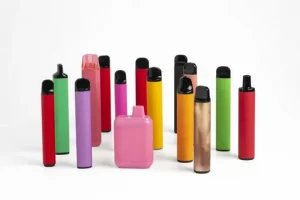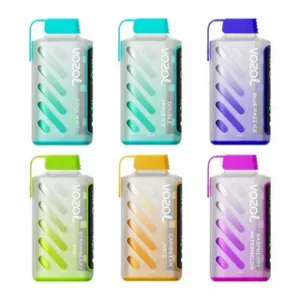Everything You Need to Know About RV Water Heater Maintenance and Efficiency

An RV water heater is a vital component of any camper or motorhome, providing hot water for showers, dishwashing, and other daily needs. Proper maintenance ensures that it operates efficiently, extends its lifespan, and prevents costly repairs. Whether you have a traditional storage tank or a modern tankless unit, keeping your water heater in top condition is essential for a hassle-free travel experience.
If you are looking for a reliable and energy-efficient RV water heater, choosing a high-quality model designed for performance and durability is crucial. Regular upkeep will maximize efficiency and reduce energy consumption, making your road trips more comfortable and cost-effective.
1. Understanding Your RV Water Heater
Before diving into maintenance and efficiency tips, it is important to understand how your RV water heater works. There are two main types:
- Tank Water Heaters: These store and heat a specific amount of water, typically 6 to 10 gallons. They operate using propane, electricity, or both.
- Tankless Water Heaters: Also known as on-demand heaters, these provide hot water only when needed, making them more energy-efficient.
Both types require regular maintenance to function properly, avoid breakdowns, and improve efficiency.
2. Routine Maintenance for RV Water Heaters
Flushing the Water Tank
Over time, sediment and mineral deposits can accumulate inside a tank water heater, reducing efficiency and causing damage. Flushing the tank every six months helps remove buildup and keeps the system running smoothly.
Steps to flush your RV water heater:
- Turn off the power supply (electric or propane) and allow the water to cool.
- Attach a hose to the drain valve and let the water flow out.
- Open the pressure relief valve to speed up drainage.
- Use a tank rinser or flush wand to remove sediment from the bottom of the tank.
- Close the valves and refill the tank before turning the heater back on.
For tankless water heaters, descaling with a vinegar solution is recommended to prevent mineral buildup inside the heating elements.
Checking the Anode Rod (For Tank Heaters)
The anode rod is a metal component that attracts corrosive elements to protect the water heater tank. Inspecting and replacing the anode rod every 1-2 years helps prevent rust and prolongs the lifespan of your heater.
To check the anode rod:
- Remove it from the tank using a wrench.
- If it is more than 50% corroded, replace it with a new one.
Inspecting the Pressure Relief Valve
The pressure relief valve prevents excessive pressure buildup in the tank, reducing the risk of explosions or leaks. Test it regularly by lifting the valve handle and allowing some water to flow out. If it does not release water or is leaking, replace it immediately.
Checking for Leaks and Gas Connections
Leaks can occur in both propane and electric models. Inspect connections, hoses, and seals regularly to ensure there are no signs of water or gas leaks. If you detect a propane leak, turn off the gas supply and seek professional assistance.
3. Improving RV Water Heater Efficiency
Use a Water Heater Bypass Valve
A bypass valve helps conserve energy by allowing you to drain and winterize the system efficiently. It also prevents antifreeze from entering the water heater when preparing your RV for storage.
Insulate the Water Heater
Adding insulation to the water heater tank and pipes helps retain heat longer, reducing the amount of energy needed to maintain hot water. Insulated blankets or foam pipe covers work well for this purpose.
Set the Right Temperature
Most RV water heaters allow you to adjust the temperature settings. Keeping the temperature between 120°F and 140°F (49°C – 60°C) ensures comfortable water heating while preventing overheating and unnecessary energy consumption.
Use an On-Demand Water Heater for Better Efficiency
If your RV has a storage tank model, consider upgrading to a tankless water heater. These systems heat water only when needed, reducing fuel and electricity usage. While the initial cost is higher, the long-term savings and improved efficiency make it a worthwhile investment.
Turn Off the Heater When Not in Use
Turning off the water heater when it is not needed—such as when driving or staying at a campsite with on-site showers—helps conserve propane or electricity.
4. Troubleshooting Common RV Water Heater Issues
No Hot Water
- Check the power supply (propane, electric, or both).
- Inspect the thermostat and reset it if needed.
- If using propane, ensure the gas valve is open and the pilot light is functioning.
Water Takes Too Long to Heat
- Sediment buildup may be reducing heating efficiency—flush the tank.
- Check for low propane levels or faulty heating elements.
Smelly or Discolored Water
- Bacteria buildup in the tank can cause unpleasant odors. Flushing the system with a vinegar-water solution can help.
- A corroded anode rod may also cause discolored water—replace it if necessary.
Leaking Water Heater
- Tighten loose connections or replace worn-out seals.
- If the tank itself is leaking, it may need to be replaced.
5. Winterizing Your RV Water Heater
If you are storing your RV during cold months, winterizing your water heater prevents freezing and damage.
Steps for winterizing:
- Turn off and drain the water heater completely.
- Use a water heater bypass valve to prevent antifreeze from entering the tank.
- Pump RV-safe antifreeze through the plumbing system to protect pipes.
- Close all valves and ensure the system is sealed properly.
Proper winterization ensures that your RV water heater remains in good condition and is ready for use when camping season resumes.
Conclusion
Regular maintenance and efficiency improvements can help extend the lifespan of your RV water heater, ensuring reliable hot water during your travels. By flushing the tank, checking key components, and making simple adjustments like insulation and temperature control, you can keep your water heater running smoothly while reducing energy consumption. Whether you use a traditional tank model or upgrade to a tankless system, following these best practices will enhance your camping experience.




